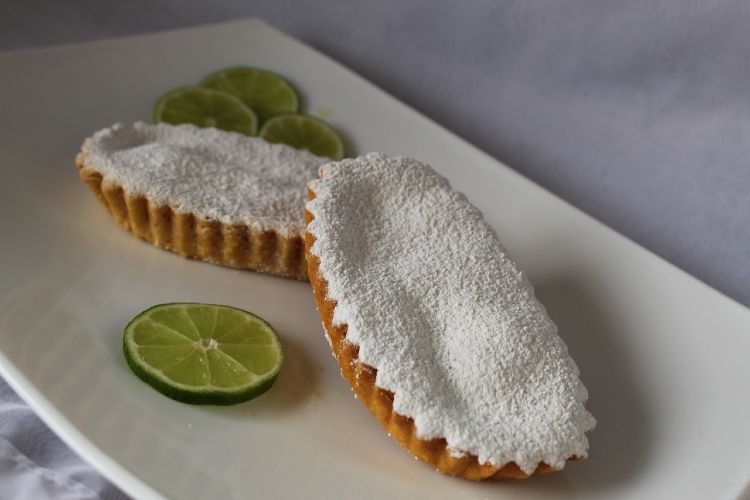Kitchen and Dining Room Textiles: The Elizabeth Baer Masterclass
Bradford on Avon is a very prosperous town on the banks of the River Avon, and sat on one of its many hills, overlooking the stone architecture and manicured, neat gardens below, is an imposing Georgian merchant’s house, home to one of the world’s most knowledgeable vintage fabric experts. I have an appointment, and my sense of anticipation and excitement is palpable. Yes, I am a vintage kitchen linen dealers’ groupie.
Elizabeth Baer greets me with enthusiasm as she opens the front door, and as I step inside, into a grand pillared hallway, all around me are the artefacts and collectibles that one would expect from the home of a lady who has dedicated the last twenty years of her life bringing together, exhibiting and selling some of the most coveted vintage linens and brocante in the world. A trip to Elizabeth Baer’s house is a life changing experience.
We are standing in her dining room, filled with very attractive Georgian furniture, paintings and porcelain, and she tells me how she forged a career out of trading French textiles, supplying some of the top names in the interiors’ trade, and being featured in all the top magazines. She frequently travels to France, for weeks at a time, finding, through her contacts, antique textiles, vintage fashion, belle brocante, bygones and decorative objects.
In France, throughout the 18th and 19th Century, any well to do, bourgeois families would want to show how prosperous and socially respectable they were by their accessories and adornments. Their bed linens would be made of the finest linen cloth, and not cotton, or mixed “Metis” linen; their pillowcases would be monogrammed in fine point stitch; their dresses would be block dyed with bold colours, hand sewn with tiny beads and embellished with ornamentation; they had different gradations of linens for napkins, tea towels, scarves, hand towels and torchons.
Everything was on show, to impress and solicit envy, comparison and admiration from peers. To use a heavy, rough peasant cloth in a front-of-house, upstairs domestic setting would be a total social faux pas, and we chatted about the irony of the fact that now faded Hungarian and Ukraine grain sacks are all the rage in up-market Chelsea houses, and time worn oxen covers from the Pyrennees are used to upholster the furniture of rich bankers’ holiday homes.
She even showed me a fine, embroidered baguette bag with a wooden handle. The maids that were sent out to do the daily food shopping would have to be well dressed, and carry a pretty basket, covered with a fine cloth, just in case the neighbours were to see them.
We walk up the stairs, to Elizabeth’s huge landing, where she sits at her work table, renovating, sewing, labelling, sorting, ironing the mile upon mile of beautiful old ticking, toile de jouie, embroidered panels, curtains, tablecloths, napkins and kitchen linens.
She tells me about a wonderful old lace tablecloth that was made by Irish nuns at the turn of the 19th Century, for Daisy, Lady Warwick, one of the many mistresses of King Edward VII. The detail is exquisite, the fine lacework adorning the edges and central part of linen is so delicate and complex, I can hardly believe that human hands were capable of such minute artistry.
Elizabeth shows me an example of Indienne linen, which was dyed with Rose Madder, a plant dye which fixed very well. Fugitive dyes were a great problem for textile printers and plant dyes were often fixed with urea, as this contains an acid. The most frequent colours to be found in old textiles are red, pink and blue, as these were the easiest to fix.
In order to protect the colours on her fabrics from fading, Elizabeth keeps her shutters and curtains tightly shut, as sunlight can irreparably damage old textiles. In her dining room, for example, are 120 year old curtains which are block painted in colours so vibrant you would imagine they were made yesterday. They depict the Indian tree of life, and some of the finer details have been metal engraved, thin leaf stems looping round delicate leaves, and flower petals that look as if they are contoured with the most fine brushstrokes. Often these sorts of fabrics were used as wall panels, instead of paintings.
She encourages people to use all the domestic linens she sells, to wash them in cold water using only non-biological detergent and no bleach. The people who created them were extremely skilful experts, and their endeavours would be wasted if collectors just hid everything in drawers, wrapped in tissue paper, and saved for Christmas day.
There are shelves upon shelves of monogrammed, embroidered napkins and extremely eye-catching long strips of material which, in the 1920s and 1930s, housewives would embroider to decorate kitchen and pantry shelves, as well as mantelpieces.
In the basement of Elizabeth’s house, the old wine vaults are now a rabbit warren Aladdin’s cave of old china and fabrics. There are yards of old hand woven hemp, “molletons” which are soft, white, lightweight summer blankets with a red stripe, rolls of tea towel materials and Basque linen. These are beautiful, stripy tea towels and tablecloths that are woven in alternating bright colours, each colour symbolising a different village, or region.
Elizabeth believes that, deep down, there is psychological reassurance and familial security in these old, time worn fabrics that carry the patina of age, tradition, religion and history. Some of these linens were passed down from generation to generation, given as dowries, and used as symbols of wealth and importance. Many factors have affected the trade and price of these fabrics, from the East India Company’s control of land routes to the changes in fashions, and, of course, the outcome of world wars and the movement of capital and wealth. The rise and fall of the grand country houses since the Second World War, the sharp decline in the numbers of domestic servants, the advent of mass produced goods, paper towels, plastic paraphenalia, domestic washing machines and a general movement away from the traditions of the old generation all heralded the demise of these precious textiles, that came to be seen as fusty and old-fashioned in the modern kitchens and dining rooms of the 1950’s and 1960’s.
Yet, testimony to the continuation of Elizabeth’s thriving trade amongst ardent cognoscenti collectors, she has a very long schedule of fairs, where she goes to sell textiles and meet her customers, who often put in requests for individual items. Her energy and passion for her specialist subject is undimmed, she still feels the buzz and her head is filled with information, facts figures and stories.
As I leave her house, stepping out onto the picture-postcard herb garden at the front, I could not imagine a better life, than one surrounded by such magnificent, practical, utilitarian, yet precious heirlooms. If only those linens could talk. What a story they would have to tell. Elizabeth Baer is an ambassador for those linen stories, retelling their journey, their continuity and their glory. And yes, I am now an even keener groupie.
Contact and Fair details
A visit to Elizabeth Baer’s house is by appointment only, or you can see her textiles at fairs, on the dates below. Check her website, as some fairs require an invitation.
Website: www.elizabethbaertextiles.com
E-mail: [email protected]
Telephone: 01225 866 136 (evenings)
20th May 2011: Abbey Barn Glastonbury Rural Museum, Friday
8th June 2011: Brownsword Market, Poundbury
1st and 2nd July 2011: Bradford on Avon Church, Church Street (Invitation required)
1st September 2011: American Museum, Claverton, Bath (Invitation required)
12th October 2011: Ilminster Metting House.


